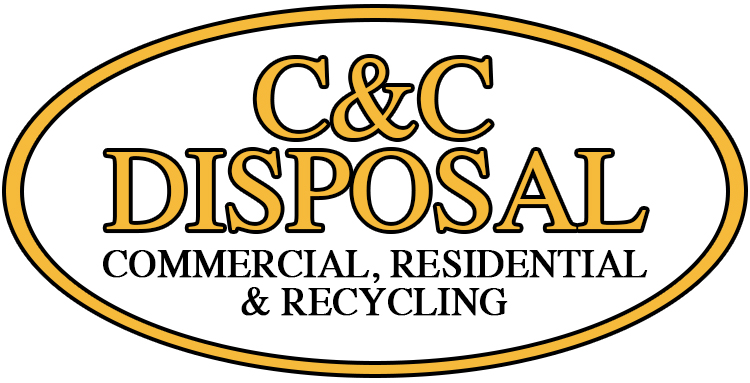
The current efforts to save the planet from the effects of man-made climate change are truly staggering, and every advance in the project is something to celebrate. One of the easiest ways for people and businesses to join in this noble undertaking is to improve upon their recycling program—or begin one, if they haven’t already. But for every plastic bottle or soda can we recycle, there will also be a coffeehouse disposable cup or handful of dead batteries. That is what makes learning about proper recycling protocols so important. Here are six of the most common recycling mistakes people make and how to correct them.
Food Contamination
For some people, the best part of going out to eat is the leftovers for the next day. But unfortunately, thanks to food contamination, your doggy-bag won’t be fit for recycling. The same concept applies to any cardboard or paper product that has food stains, grease stains, or leftover food scraps along the inside of the box. Not only does this negate it from recycling, but it also can ruin an entire batch if it makes it through the sorting.
There are probably several items sitting in your bin right now that you really can’t recycle. Pizza boxes, coffee cups, and takeout containers are all likely to have food or grease stains and should go into your trash can and dumpster instead. On the other hand, plastic, metal, glass, or tin items are still recyclable—you just need to wash them out before you put them in the bin.
Package Delivery Extras
As a whole, we are slowly moving toward a society where we complete our everyday shopping virtually and receive the delivery to our doors within 24 hours. This technology has many benefits, including allowing families to spend more time together, helping the elderly and those with mobility problems get their groceries and medications, and allowing those without a car easy access to products and services that might otherwise have been out of reach. But one of the drawbacks to this delivery revolution is the abundance of excess waste it has produced.
Fortunately for us, most of these items are either recyclable or reusable. We can break down cardboard boxes and save them for later use or take them down to the curb with the rest of the recycling. Packing materials like bubble wrap and other items designed to protect products during transit are also reusable. One major exception is packing tape. Packing tape is a type of plastic that isn’t recyclable but can add up quickly in your waste bins. The same is true of polystyrene, a product some companies use in their packaging.
Plastic Bottle Tops
There are legitimate debates about whether plastic bottle tops like the ones on soda bottles and pump-handle soap dispensers are recyclable. One side claims that the bottle tops are too small and can clog up the recycling machines. They also claim that the plastic in these bottles is a type that local recycling centers don’t take and should go into the garbage instead.
On the other side of the debate are those who claim that all of that is rubbish. This faction claims that this type of plastic is just like other types that recycling centers take in and process every day. They also claim that the argument against recycling something because it is too small is silly.
So who’s right? They both are, actually. In some communities, plastic bottle lids are a type of plastic that the recycling center can’t accept, while others have no problem taking them. The same is true about items being too small for recycling. Most centers can take any small item, as long as they’re the correct material. The exception to this is for broken glass, which poses a threat to anybody handling it. Throw broken glass away in the trash instead of trying to save it.
Not Sorting
The backbone of a good recycling program is having a process for handling all the different forms of recyclable waste that they can come across. This is a grand and noble ambition that requires a significant amount of human effort from workers. One way to help make this process easier is by pre-sorting their recyclables into paper, plastic, and glass before pickup.
There are many different ways to make this simpler for people in their homes and offices. The best way to do this is to have separate bins for different materials as you throw them away instead of sorting everything after the fact. There are many indoor and outdoor recycling bins that provide individual openings for the different types of recyclables.
Plastic Bags
Some people like to bundle up their recycling in those plastic grocery bags they brought home with their shopping last week. It’s all plastic, right? But this may actually hamper your efforts. The same is true of most garbage bags—using them this way is simply wasteful. It’s best to just throw recycling away in the appropriate bin and let your local recycling company decide how they want to bundle everything.
There is more to say about plastic grocery store bags. Many times, recycling companies can’t handle this type of plastic, so they waste time opening the bags at best or throwing the entire bag and the contents away at worst. If you do find your home overrun with these environmental nightmares, some grocery stores still take them back to recycle themselves.
Diapers
Please don’t try to recycle these. Human waste is a biohazard that nobody wants to deal with, so it’s truly scary that this is one of the most common recycling mistakes people make. Whoever came up with the idea that this was an OK thing to do is wrong in every way. Please remember this the next time you think about throwing your child’s diaper in with the newspapers.

Recent Comments